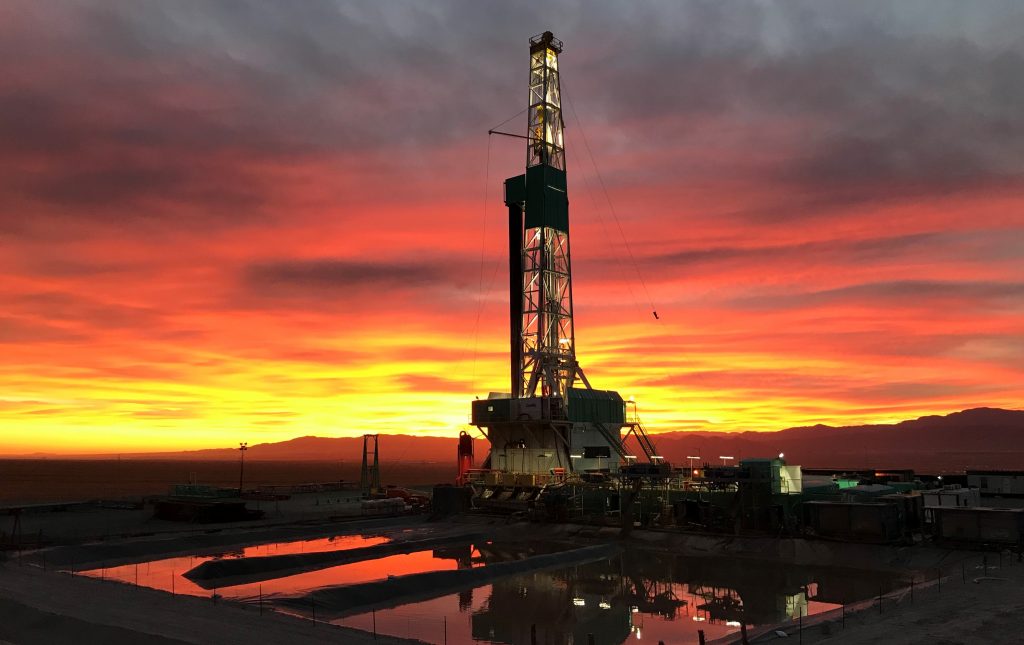 Utah Forge site at sunset (source/ photo: Eric Larson, FlashPoint SLC via UtahForge)
Utah Forge site at sunset (source/ photo: Eric Larson, FlashPoint SLC via UtahForge)In a recent test, 1800 barrels of water were injected into the injection well and were recovered from the production well. These are still initial tests and a series of tests will still be conducted to determine the commercial viability of the project. The system will need to be able to support a flowrate hundreds of gallons per minute to be considered commercially viable.
Even with the preliminary results, this represents a huge achievement for the groundbreaking EGS research project that hopes to help revitalize other EGS projects worldwide. The project is funded by the U.S. Department of Energy and managed by the Energy & Geoscience Institute at the University of Utah. The project site is located southwest Utah near the town of Milford.
“We do have some connectivity between the two wells,” confirmed Dr. John McLennan, Prof. Chemical Engineering at the University of Utah, and Utah FORGE – Co-Principal Investigator.
The injection well at Utah FORGE was drilled between October 2020 and February 2021. Well 16A is a high-enthalpy well with a bottom hole temperature of 230 degrees Celsius, drilled to a total vertical depth of 8559 feet (2608 meters) and a measured depth of 10,987 feet (3349 meters). Hydraulic fracturing from this well was done in three stages, creating separate fracture zones.
Drilling of the production well then started in April 2023.
McLennan stated that seismic monitoring has been done constantly for the project. Wells surrounding the main doublet are used for monitoring and have been outfitted with geophones and other sensors to detect and triangulate the locations of microseismic events. According to McLennan, the largest scale of seismic activity that happened during the fracturing process was logged at 0.5 magnitude.
The first phase of the Utah FORGE project is expected to wrap up in 2023, but the second phase is being anticipated until 2032. Joseph N. Moore, Managing Principal Investigator and Co-Principal Investigator of Utah FORGE, says that they expect to apply for more funding after the current DOE funding expires on 2025.